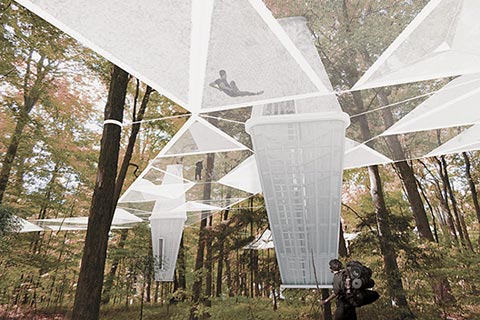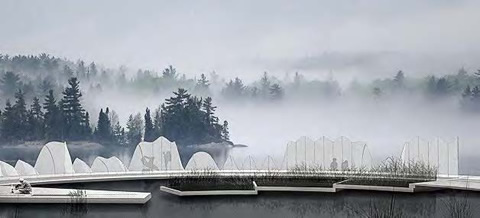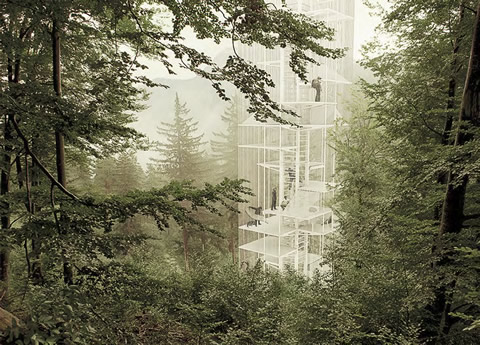Every summer, hundreds of thousands of Canadians pack up their vehicles and head to campgrounds to pitch a tent and spend some time closer to nature. But for Mason White, a professor at the Daniels Faculty of Architecture, Landscape, and Design, a trip to a popular car-camping spot in southern Ontario a few years ago was a tad underwhelming: “It felt a bit like we were setting up tent in the suburbs,” he says.
He and business partner Lola Sheppard at Lateral Office, a Toronto architectural firm, wondered how they might reinvigorate the collective camping experience in an authentically Canadian way. Working with students from the University of Toronto and the University of Waterloo, they designed five new campsites, each with a specific environment in mind. These include the “Lookout” (top) and “Suspend” (immediately below) for forests; and the “Closed Loop” (bottom) for lakes and wetlands.

White says all of the sites cater to people who want to branch out from car camping but are not so keen on the more rugged canoe tripping, with almost no amenities. Each of their schemes features a simple timber construction and incorporates tents, so campers don’t have to bring their own.
The Lookout enables campers to sleep high up amongst the trees. Campfires would be located at the bottom of the structure, a little like the urban experience of having a restaurant at the bottom of a condo building.

The Closed Loop is designed to be accessible to campers by canoe or, if partially anchored to land, on foot. Tents are provided on the outer part of the ring. The inner part is for gathering and filtering water and swimming.
Parks Ontario and Parks Canada are interested in both designs, and Lateral Office has discussed testing one of them at a park in southern Ontario.
“This is about modernizing a traditional experience that is part of our national identity,” says White. “These are platforms for experiencing the landscape – not just seeing it, but inhabiting it for a period of time.”
See all five of Lateral Office’s campsite designs.
Recent Posts
U of T’s 197th Birthday Quiz
Test your knowledge of all things U of T in honour of the university’s 197th anniversary on March 15!
Are Cold Plunges Good for You?
Research suggests they are, in three ways
Work Has Changed. So Have the Qualities of Good Leadership
Rapid shifts in everything from technology to employee expectations are pressuring leaders to constantly adapt






